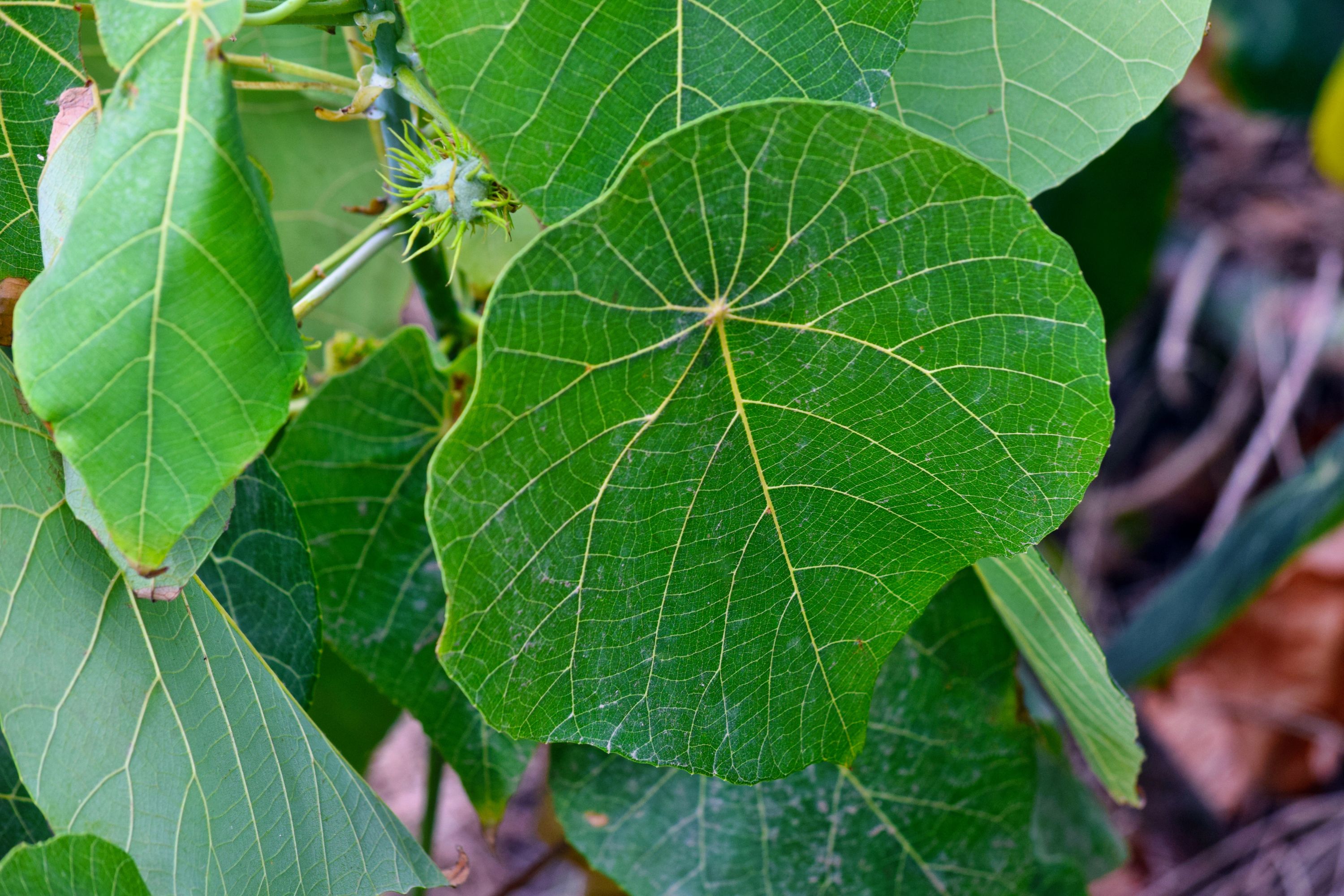Parasol leaf tree
(Macaranga tanarius)

Description
Macaranga tanarius is a plant found in South East Asia, Thailand, Papua New Guinea, Taiwan, and eastern Australia. It is commonly seen as a pioneer species in disturbed rainforest areas. Easily recognised for the round veiny leaves. In Australia it naturally occurs from the Richmond River, New South Wales to Cooktown in tropical Queensland. Some of the many common names include parasol leaf tree, blush macaranga, nasturtium tree, David's heart and heart leaf. It is a shrub or bushy tree, sometimes reaching 12 metres tall and with a stem diameter of 40 cm. The trunk is short and crooked, bark being grey-brown, with bumps and irregularities. The branchlets are smooth, bluish grey with prominent leaf scars. Leaves are alternate, and round with a tip, 8 to 23 cm long, greyish or white on the underside. It has prominent leaf stalks 8 to 20 cm long which connect within the leaf itself. Nine main veins radiate from the leaf stalk, easily noticed on the upper and lower leaf side. Yellow-green flowers form on panicles in the months of October to January (in New South Wales). Female and male flowers grow on different trees. The fruit is a prickly three-celled yellow capsule, 9 mm in diameter, maturing in January to February (in New South Wales). There is one black seed in each of the cells. Germination from fresh seed occurs without difficulty. Cuttings strike well. Macaranga is a large genus of Old World tropical trees of the family Euphorbiaceae and the only genus in the subtribe Macaranginae (tribe Acalypheae). Native to Africa, Australasia, Asia and various islands of the Indian and Pacific Oceans, the genus comprises over 300 different species. It was first described as a genus in 1806, based on specimens collected on the Island of Mauritius. Macaranga is noted for being recolonizers. Macaranga species are used as food plants by the larvae of some Lepidoptera species including Endoclita malabaricus. Macaranga species often form symbioses with ant (Formicidae) species (particularly Crematogaster ants of the subgenus Decacrema) because they have hollow stems that can serve as nesting space and occasionally provide nectar. The trees benefit because the ants attack herbivorous insects and either drive them away or feed on them.
Taxonomic tree:







